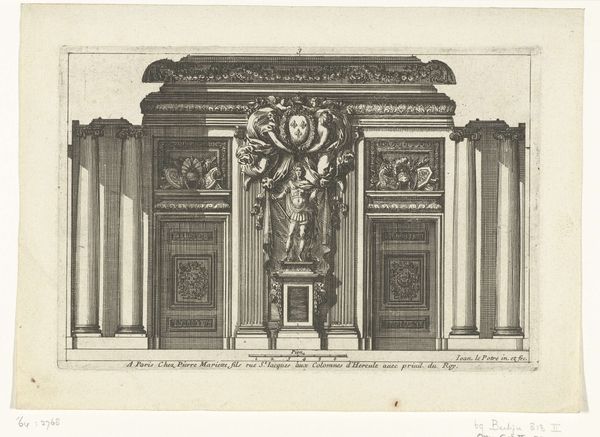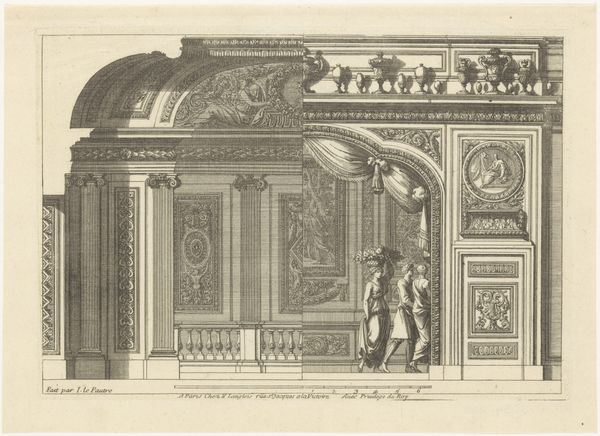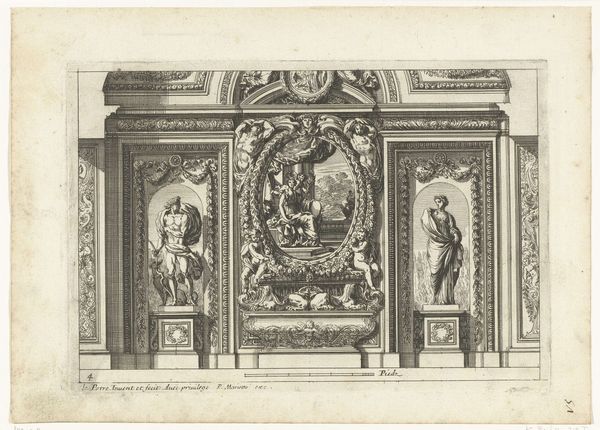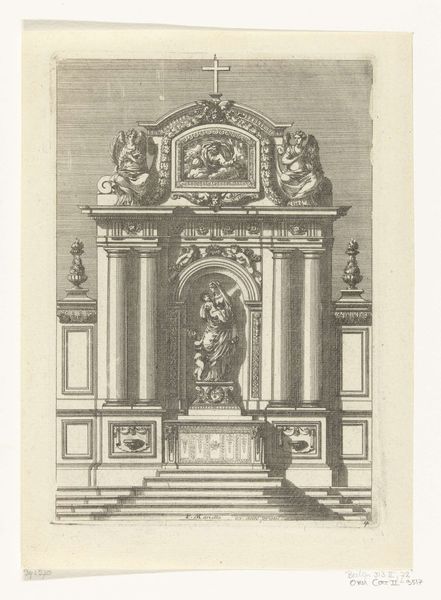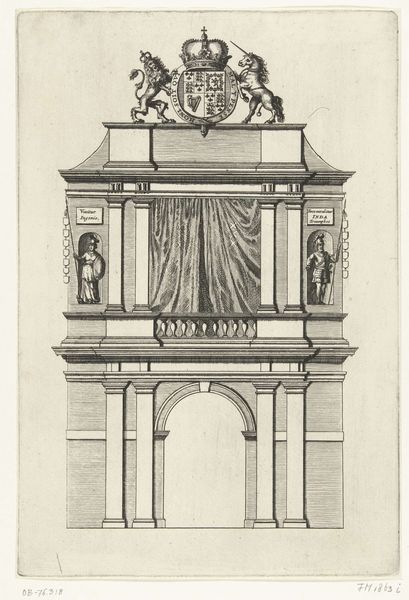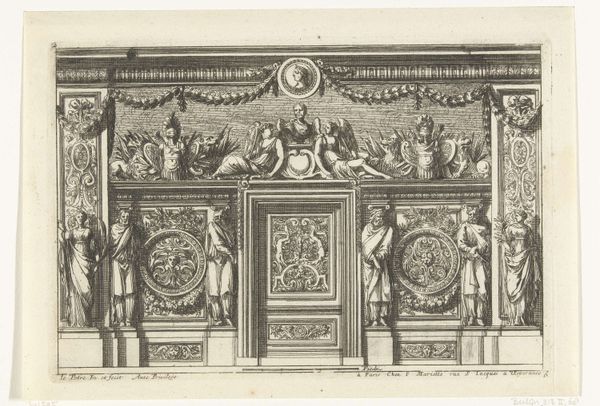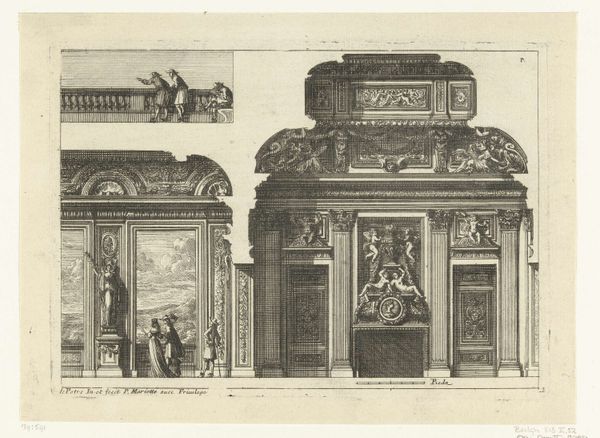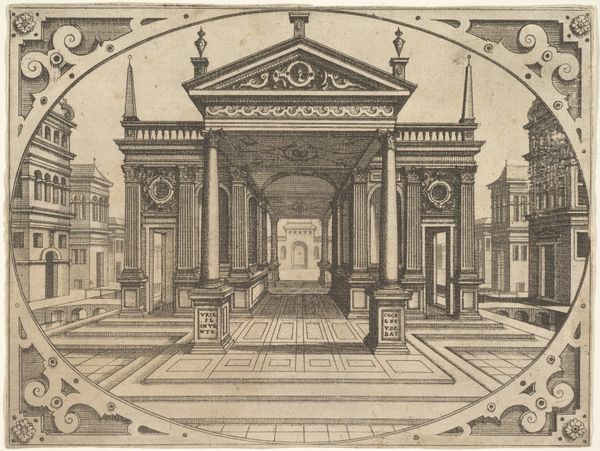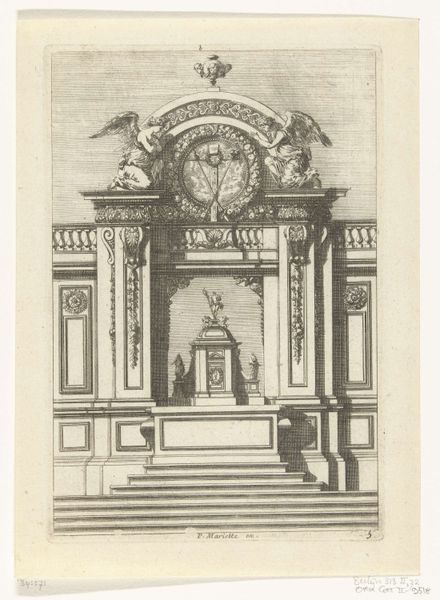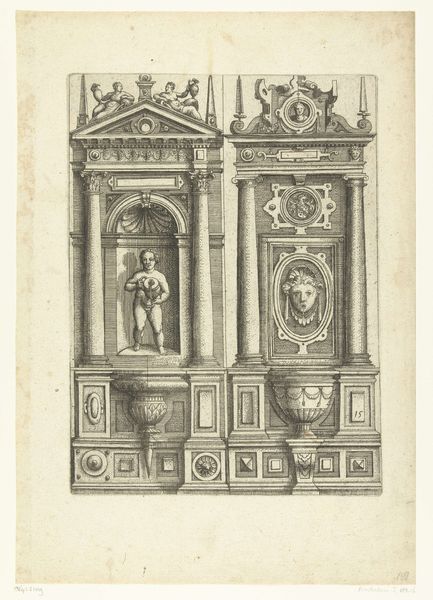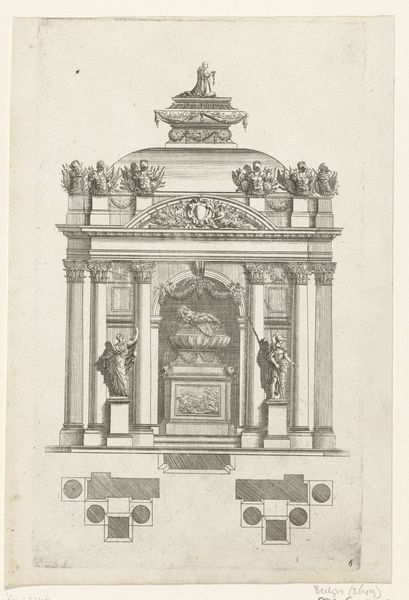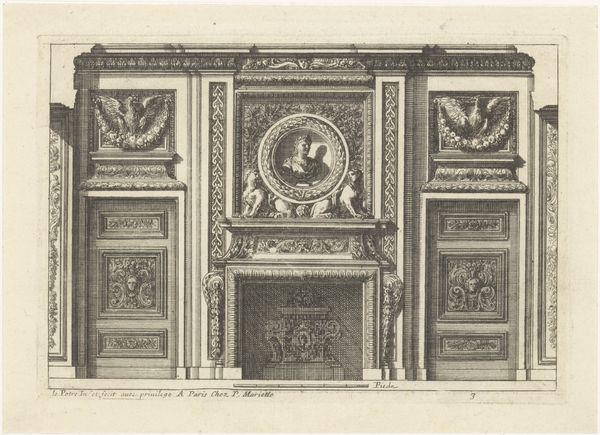
drawing, print, engraving, architecture
#
drawing
#
aged paper
#
toned paper
#
baroque
#
mechanical pen drawing
# print
#
pencil sketch
#
old engraving style
#
sketch book
#
classical-realism
#
personal sketchbook
#
sketchwork
#
classicism
#
pen-ink sketch
#
line
#
pen work
#
cityscape
#
history-painting
#
engraving
#
architecture
Dimensions: height 152 mm, width 206 mm
Copyright: Rijks Museum: Open Domain
Curator: This print, entitled "Doorsnede van zaal" or "Cross-section of a hall", comes to us from the Baroque era, before 1716, and is attributed to Jean Lepautre. It’s a detailed architectural engraving, now residing in the Rijksmuseum collection. Editor: It strikes me immediately with its formality, this almost obsessive detail used to render what I assume is a grand interior. It's visually rich, but feels somehow…cold. Curator: Absolutely. Lepautre, known for his ornamental designs, here captures not just the structure but also the aspirations of the era. Think about the absolutism of the French monarchy under Louis XIV – this aesthetic reflects the political landscape. Every column, every statue is deliberate. It communicates power and prestige. Editor: Precisely, there’s a strong visual vocabulary in use here. The inclusion of classical figures, for example – the sculpted gods and goddesses positioned in those niches– it’s a clear attempt to align with the cultural capital of antiquity. Those busts are almost like secular saints overlooking the space. Curator: Yes, this revival of classical forms during the Baroque period sought to legitimize contemporary power through association with the Roman Empire. Also consider the function of a "cross-section". Lepautre reveals the idealised construction; a design meant to shape behaviour, projecting both control and culture onto its inhabitants. How would that impact upon those living or visiting within the physical structure? Editor: I wonder though, if that controlled aesthetic truly resonated, or if the weight of such a prescribed symbolism perhaps suffocated genuine emotional experience. Those couples dancing, or observing nearby—are they truly participants, or just figures completing a composition? Curator: It raises an important point: for whom was this hall really built, and who could access it? This image invites reflection on power structures. I think we have to read past the pure symmetry and acknowledge those unspoken social constraints within. Editor: The precision and artistry on display provides a window into how past societies memorialized themselves through images. But to you point—they often reveal far more about ideology and aspiration than the complex realities of life itself.
Comments
No comments
Be the first to comment and join the conversation on the ultimate creative platform.
